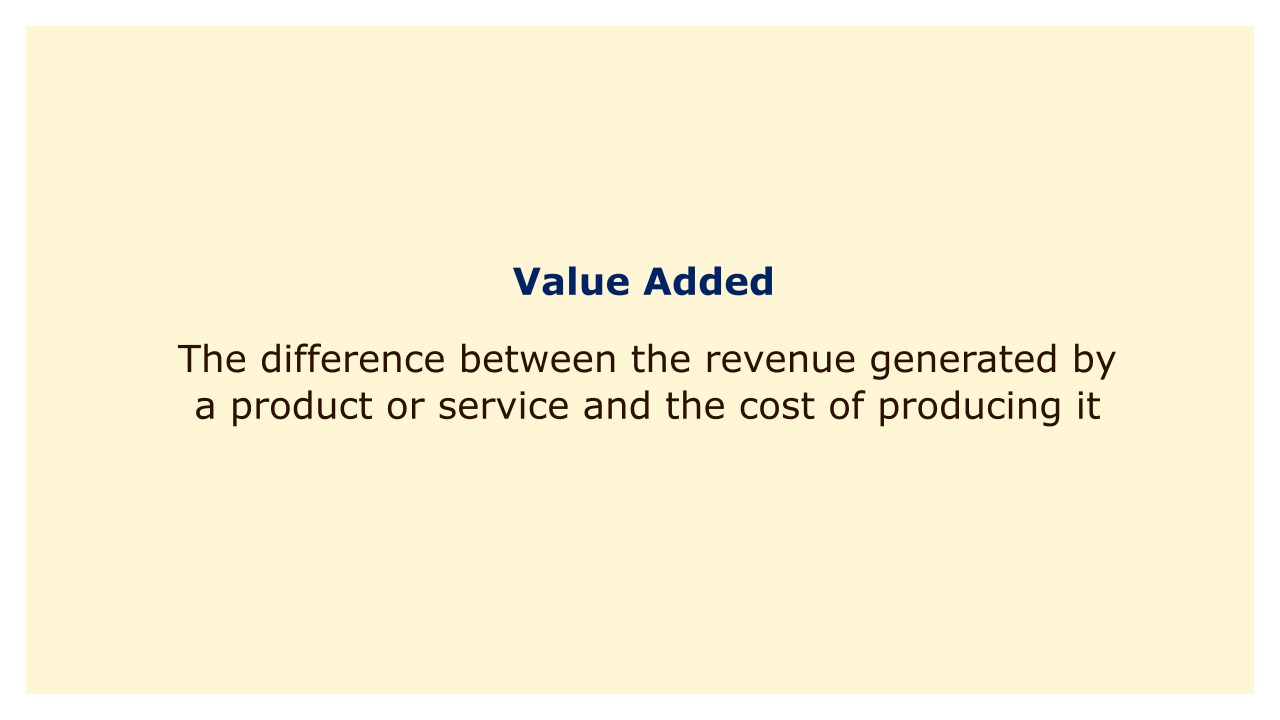 |
| Image: Moneybestpal.com |
Value added is the discrepancy between a product or service's revenue and its production costs. It is a gauge of the value a company generates for its stakeholders and customers.
By deducting the expense of inputs (such as raw materials, labor, and overhead) from the revenue of outputs, value added can be determined (such as sales, fees, or subscriptions). For instance, a bakery's value added is $10 if it sells a cake for $20 and spends $10 on supplies, labor, and rent.
Value added is crucial to the success of your company because it shows how skillfully and productively you utilise your assets to benefit your stakeholders and customers. Your profitability and competitiveness might increase if you have a higher value added, which indicates you are producing more income while incurring less costs.
Also, value added might help you pinpoint your competitive advantage and set yourself out from your rivals. You can determine where you have the most influence and where you can make improvements by evaluating how much value you offer at each stage of your manufacturing process. Also, you may utilize value added to explain to your clients and other stakeholders your special value proposition and demonstrate to them how you add value to their lives.
Value added is a strategic tool that can help you expand your business and meet your objectives as well as a financial statistic. You may improve customer happiness, loyalty, and retention as well as draw in new clients and grow your market share by putting more emphasis on generating value for your stakeholders and consumers. By adding more value to your community and environment, you can improve your reputation, brand image, and sense of social responsibility.
In conclusion, value added is a crucial metric for assessing the value that your company generates for its stakeholders and customers. It can assist you in performing performance evaluations, determining your competitive edge, and communicating your value offer. Your profitability, competitiveness, and sustainability can all be improved by raising your value added.
Also, value added might help you pinpoint your competitive advantage and set yourself out from your rivals. You can determine where you have the most influence and where you can make improvements by evaluating how much value you offer at each stage of your manufacturing process. Also, you may utilize value added to explain to your clients and other stakeholders your special value proposition and demonstrate to them how you add value to their lives.
Value added is a strategic tool that can help you expand your business and meet your objectives as well as a financial statistic. You may improve customer happiness, loyalty, and retention as well as draw in new clients and grow your market share by putting more emphasis on generating value for your stakeholders and consumers. By adding more value to your community and environment, you can improve your reputation, brand image, and sense of social responsibility.
In conclusion, value added is a crucial metric for assessing the value that your company generates for its stakeholders and customers. It can assist you in performing performance evaluations, determining your competitive edge, and communicating your value offer. Your profitability, competitiveness, and sustainability can all be improved by raising your value added.
